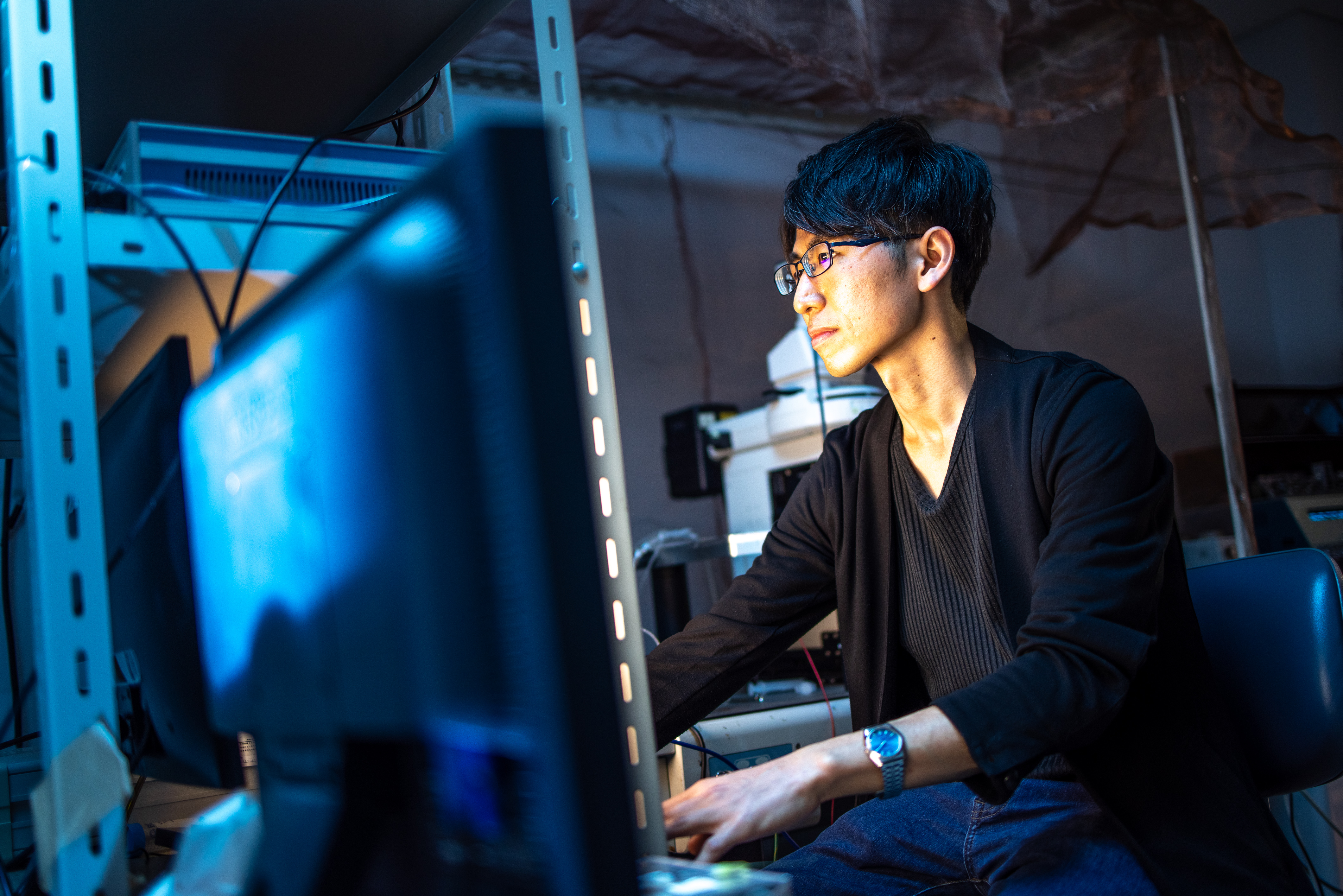
Dr. Masaharu Hasebe, Assistant Professor, Department of Biological Sciences, Graduate School of Science
"Mysterious memory: pursuing the secrets of memory in the brain"
Dr. Masaharu Hasebe has been striving the elucidation of the mechanisms behind memory in the brain ever since he began tackling this topic with Gryllidae during his time as an undergraduate at Tokyo Gakugei University. He received his PhD at the University of Tokyo and was immediately appointed as an Assistant Professor at Osaka University in 2017.
Striking discovery of a biological clock gene in bean bugs for seasonal egg-laying
Over the past few years, Dr. Hasebe has been conducting research on this topic with bugs and has recently revealed for the first time that a day length-dependent response in insect neurons that promote egg-laying requires a circadian clock gene, known as period . The results of this research were published in Proceeding of the National Academy of Sciences of the United States of America.
Animals show photoperiodic responses in physiology and behavior to adapt to seasonal changes and it is known that circadian clock genes are important to this response. However, it was not previously clear how information about day length is encoded at the cellular or circuit levels based on these clock genes. Dr. Hasebe and his team analyzed this response at the cellular level, specifically circadian clock gene expression in the brains of bean bugs, focusing on the large cells of the pars intercerebralis, a brain region important for promoting egg-laying in bean bugs. The combination of methods used by Dr. Hasebe in this study will help to clarify the importance of the circadian clock’s molecular basis in photoperiodic encoding within cells, and future such studies will further the understanding of how animals’ brains process seasonal information in their responses to day length.
Steadily developing both his research and his research environment
Dr. Hasebe began using bean bugs for his research after he moved to Osaka University. Since it was a relatively new laboratory, Dr. Hasebe was able to outfit it for his research by acquiring facilities and equipment for his first year at OU and then gradually developing both his research and the environment in which he performs it. He was finally able to get a clear vision of the direction and methods for his research in his third year at OU, which led him to these findings. He appreciates the opportunity provided to him to conduct his research in the longer scope.

What’s next for Dr. Hasebe as a scientist?
When he was an undergraduate student, Dr. Hasebe did not imagine that he would become a scientist, as he had hoped to become a science teacher at school. However, his inquisitiveness about the brain, particularly the mechanism for establishing information as memory in the brain, has led him here. The brain absorbs information every second, but every single person gathers different information from the same source. The scientist in him longs to find the answers to how and where this difference is generated in the brain focusing on neuronal electrical activity, gene expression, and cell morphology. While he does not believe that 100% verification of any of his findings is possible through his research alone, he has a firm will to do as much as possible to achieve 99.9% accuracy through repeated experimentation and analysis. That is his belief and pride as a scientist.
Text: Saori Obayashi/Edit: Christopher Bubb